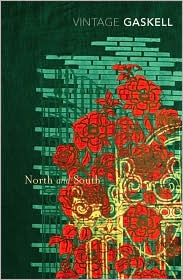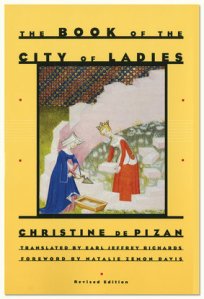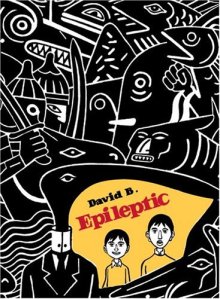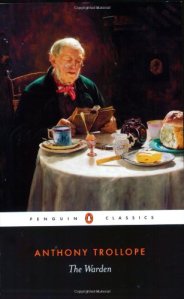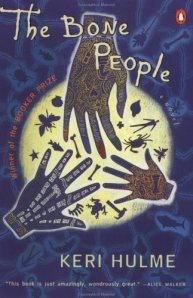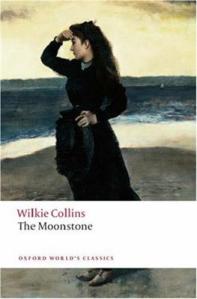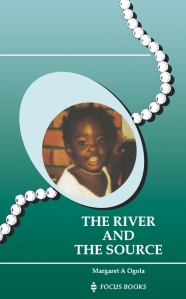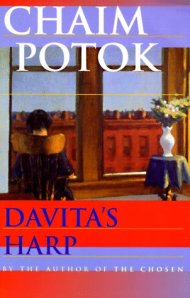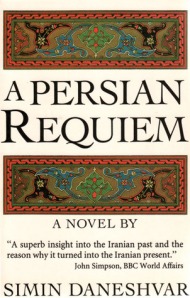Archive for the ‘Non-fiction’ Category
Mark Twain and the Colonel: Samuel L. Clemens, Theodore Roosevelt, and the Arrival of a New Century, by Philip McFarland
Samuel Clemens, better known as Mark Twain, and Theodore Roosevelt were two of the most famous men in America at the turn of the century, but had little in common besides an intense mutual dislike of each other. Where Roosevelt was a beloved leader, Twain had his finger on the country’s cultural pulse and was a sort of pre-pop icon. Twain was immensely famous in his own lifetime, and traveled in many of the same circles as did the president. Though they only met briefly a few times, they were each highly aware of the other’s career and looked upon each other with disdain. Mark Twain may have been known as a writer and humorist, but much of his work was politically engaged and often critical of Roosevelt’s administration in particular. In fact, Twain once went so far as to write that Theodore Roosevelt was “far and away the worst president we have ever had”. Roosevelt, in turn, found Twain so irritating and meddlesome that he was once said to have dreamt aloud of skinning Mark Twain alive.
Twain and Roosevelt were representative of two different facets of American masculinity in an era wrought with change due to industrialization, urbanization, and imperialism, the last of which became the most hotly contested issue between the two men when Roosevelt lead America in occupation of the Philippines. Twain had written the blueprint for American boyhood with his stories about the boisterous Tom Sawyer and Huck Finn, reflecting a folksy Americana and drawing from his own childhood despite his relatively privileged upbringing. Roosevelt, an east coast War Hero, was known for restraint, discipline, and a love of hunting, which Twain found grotesque. If my post so far seems to center Twain’s reactions to Roosevelt’s policies, that’s because McFarland himself seems to favor Twain and rely on these reactions for marking narrative transitions.
The first real problem I had with this book is that all physical and otherwise direct interaction between the men was so few and far between that a joint biography makes little sense. Had the framing been skewed to focus more on the ways in each man was symbolic of a different set of American values at a particular time (which it did, only not enough) instead of constructing an active rivalry from little more than a couple heated opinions on the part of each man, perhaps the tie that binds the two biographies would not have been so weak.
This would not, unfortunately, do away with the problem of organization. The book moves thematically rather than chronologically, which might work better were it not so repetitive. To come to the point of the death of Twain’s daughter or Roosevelt’s marriage multiple times following the tellings of different events was perhaps meant to emphasize the importance of those events in multiple contexts, but instead confused me entirely about where I was in each man’s life story and also bored me.
McFarland is a perfectly capable historian whose passion is evident in his writing, but while the relationships both personal and impersonal between Twain and Roosevelt is tempting material, it appears a thin foundation for such a lengthy and ambitious work.
A copy of Mark Twain and the Colonel was kindly sent to me by the folks at Newman Communications on behalf of Rowman and Littlefield Publishers.
Catching Up pt. 3: A Natural History of the Senses, The Housemaid, North and South, The Book of the City of Ladies, Epileptic
In A Natural History of the Senses, Ackerman draws from a number of sources and memories in a meandering rumination about the senses through which we understand the world and interpret our own human experience. It is particularly hard to communicate the specificity of different physical sensations, but Ackerman writes about smells, touch, and the like so effectively that these mercurial interpretations manifest concretely and jump straight off the page, making the reading experience, well, sensual. The book is filled with interesting trivia, such as that smell was likely the first sense developed in the primordial oceans by the earliest living organisms, and I enjoyed the recounting she did of an interview with a professional “nose”, or perfume mixologist. Clearly I was most won over by the chapter on smell, as it sticks most strongly in my memory. However, I became increasingly annoyed with Ackerman and her frequent, bizarrely specific and lengthy descriptors. They often distracted from her main point and felt unfocused, a feeling intensified by the book’s format of short, thematically arranged but otherwise non-sequitor chapters. Also, while not generally opposed to heavy reliance on anecdote, hers felt obnoxiously self-referential and pompous. So, while the subject matter was fascinating, I didn’t really get along with Ackerman very well and will likely avoid her other writing.
One day, an older woman labeled a “witch” and disowned by her grown children finds a dead infant abandoned behind her hut in rural Ghana. Word spreads quickly through her village and suddenly everyone is arguing about who is to blame, with men vilifying the imagined neglectful mother and the women bemoaning the sad arrogance of undependable men. But as the true story of what happened is told through the perspectives of a number of women, it becomes clear that this child’s death is not the fault of one or another sex, but a society in which exploitation is quickly becoming a dominant means of attaining wealth. It begins when a young housemaid travels from her village to Accra to work for a wealthy older woman whose deceased husband’s family believes that her money rightfully belongs to them. The housemaid gets caught up in a plot of inheritance to win back the money for the husband’s family, but does not realize that her employer, though happy and confident in her independence, is not free of the sexual demands of the businessmen who remain in a class above her and so is not easy to manipulate. Nor does she understand that her own family’s motives may not be good for her, personally. The final telling of what happens to her baby is tragic but it is the fault of no individual: instead, it is the result of greed and an caustic individualism. A very worthy novella that counts toward Kinna’s Africa Challenge.
I’d been wanting to read North and South forever, but passed up the North and South read-a-long because it overlapped with my trip to Kenya and then promptly forgot about it. Even though I coincidentally ended up reading it at the same time as the read-a-long, I guess it’s still good that I wasn’t signed up because I didn’t have regular internet access nor the time to participate in the discussions, but anyway. I had huge expectations for this book, and while I enjoyed it, it fell just a little flat for me. It’s hard not to compare Gaskell to her contemporaries: not as much nuance as Austen, not as righteous as Dickens, less detailed than both. Perhaps such comparisons are unfair, but some combination of Austen and Dickens is what I thought I was going to get. Margaret, who moves from an idyllic country village to a busy, crowded industrial town, falls in love with the rugged Mr. Thornton (about whom I agree with Iris is a much more worthy love interest than most of Austen’s suitors ;)). There, she befriends some of the working poor that she’d previously been so judgmental about, and sides with them in a strike against factory-owner Thornton. Thornton, a proud, self-made man, learns through Margaret to sympathize with those less successful than he in “working their way up” while Margaret reconciles herself to the reality that the country isn’t exactly paradise for the poor, either. Culture clash, class, and the industrial boom frame this troubled love story, and I appreciate how direct Gaskell was in dealing with such themes. However, there was a bit too much compromise and neatness in the way it all wrapped up for my taste. Still liked it, though, so will try more of Gaskell.
This was (ahem) the FIRST book listed for The Year of Feminist Classics challenge* and yes, I only got to it last month. This book was written by Christine de Pizan, the only (?) professional female writer in late fourteenth century Europe. It is impressive not only that she was able to support her family with her writing at this time, but that she was able to do so while unequivocally challenging the most common anti-woman sentiments of her day. Here, she imagines a scenario in which Reason, Rectitude, and Justice come to her aid embodied as three strong and lovely women to help her construct a city of positive history and mythology in which she will collect and house all the world’s most virtuous ladies. They do so first by debunking myths such as that women are natural liars, that they lack conviction and are emotionally weak, that they are selfish and are intellectually inferior to men. Much as Mary Wollstonecraft would do almost four hundred years later in A Vindication of the Rights of Woman, de Pizan argues that it is the way in which society brings girls up differently from boys that makes these stereotypes appear true and universal, but that given an equal education, girls would show as much aptitude as boys and in the same subjects (she does, however, fall very short of actually advocating for this). While her argumentation rested on reworking mythology, and this is not an acceptable form of debate nowadays, it was then–and since I was unfamiliar with so many of the stories, I kind of got a kick out of ’em despite the fact that it became very, very tedious reading. All the stuff about being a good, chaste wife etc. was irritating to my modern sensibilities, too, but I get that then she was reacting against the fact that women were only thought to be about their bodies, rooted in materiality with no spiritual or mental inner lives and value. I wouldn’t call this book relevant for feminists today, but I still enjoyed it as a feminist for the times when de Pizan utilized her stinging sense of humor and because it really made me consider context. It’s interesting to see that some ideas which are completely regressive and sexist now were once a step AWAY from an oppression that we still know, but in a completely different transformative phase. Of course, not all reactions against oppression are “progressive”, nor can that word be applied evenly across cultures and eras, which raises a lot of important questions about what constitutes progress in any given situation.
Epileptic is the deeply troubling autobiographical story by David B., formerly Pierre-Francois Beauchard, whose life has largely been shaped by his brother’s epilepsy and his family’s never-ending search for a cure. Epilepsy was little understood in 1960’s France when Jean-Christophe had his first seizure, and one of the most horrific aspects to this family history is how cruelly Jean-Christophe was treated by children and adults alike, alienating him, his siblings, and his parents from the community as punishment for exposing them to the symptoms of his illness. Their parents move Pierre-Francois, Jean-Christophe, and their sister in and out of various new-agey macrobiotic communes, inspiring hope in an unrelenting succession of mystical mentors and spiritual healers who are ultimately as lost as they are. While his parents experience increasing guilt after every failure to “fix” their eldest son and his sister becomes despondent with depression, David B. pours himself into his illustrations, picturing epic uphill battles that signify his struggle against his brother’s sickness. His thick, bold-lined drawings are appropriately claustrophobic and disconcerting, adding a fantastical element to this tragedy. David B. is always honest, refusing to leave out the ugliest bits of his history and the resentment he sometimes felt toward his brother, whose disease he could never measure up to. Dark and moving; beautiful work and intensely raw.
*I think it’s time I admitted to myself and everyone else that I’m not going to catch up on The Feminists Classics challenge this fall like I wanted to. In fact, there’s only a few books from this year’s selection that I haven’t read, but even excluding re-reads, it just isn’t going to happen. Truth be told, I’ve been dealing with the aftermath of a Very Bad Thing that happened earlier this month in the life of myself and my friends and have had difficulty concentrating on books, so I know that if I don’t allow myself to read at whim I won’t be doing much reading at all, and I don’t want that. Sincerest apologies for committing to it and then only reading one book and not participating in any of the conversations**…hopefully I will get to all the others at a later date, as they all remain interesting to me. I still plan to host the last read when the time comes, but all reading projects and such will otherwise be put on hold or ignored.
**Hello, guilt.
Confederates in the Attic: Dispatches From the Unfinished Civil War, by Tony Horwitz
Confederates in the Attic reads like a series of character sketches of the most eccentric people Horwitz met while following his most enduring childhood interest, the American civil war, on a road trip through the country’s Southern states. While he runs the risk of using the most extreme examples of civil war mania to represent Southern values and culture in general, I do think the “characters” he portrays allow him the opportunity he so desires as someone very much an Outsider: to explore the myriad of ways in which the Civil War remains central to Southern identity construction.
After all, the interests of hardcore re-enactors–and the satisfaction they get from keeping the old fight alive–differs greatly in feel and practice from that of women playing Scarlett O’Hara at international tourist destinations, on the one hand, and confederate flag merchandisers and, yes–contemporary Klansmen–on the other. Whether the appeal is nostalgia for what may in hindsight appear “a simpler time”, community-building outside the perceived constraints and perceived banality of modern life, or simply deep-seated prejudice, the Civil War remains an effective language and reference for communicating both shared discontent and longing for camaraderie.
What is still timely about the Civil War, Horwitz is told time and again by those who look upon it in reverence, are issues like states’ rights, Red vs. Blue state lifestyle battles, and remembrance of past family member’s involvement. Of course, there is great irony in the fact that racism and racial inequality is the only part of Civil War culture that is routinely dismissed as outdated by all but the most openly bigoted despite the persistence and intensity of segregation in the present day South (and elsewhere), the contemporary violence of which is so frequently expressed through Civil War racial rhetoric. One of the most interesting of Horwitz’ encounters, I thought, was with an all-black elementary school class who provided an important counter-narrative to many of those profiled throughout the book. Though he finds their schooling on the Civil War problematic (though certainly no less so than that of mostly-or-all white children’s classes and religious or heritage groups), it perfectly illustrates his point that Southerners still engage regularly and personally with Civil War issues in a way that most people in Northern, Western, and Eastern don’t feel the need to. Why? Horwitz pinpoints the thing that Southern states share, the thing that feeds this need: the unique sense of defeat and loss from within one’s own homeland which is continually reaffirmed.
My favorite part of the book was learning about the intense hierarchy that exists amongst historical interpreters (or re-enactors). What a difference the make of a pants-button or a thread count can make! The method of salting one’s pork alone, it seems, can distinguish the FARBs (those who care not enough for authenticity) from the Hardcores. I also found his bit about Southern Jews to be fascinating. Humor is Horwitz’s strength, as it helps him keep contentious issues engaging, even when enraging. He is sensitive while trying to accurately represent such opposing world views that, as someone who has only visited the South once and briefly (and greatly enjoyed it), I felt my own negative assumptions both justified and challenged at different points throughout the book. Contradictory feelings upon reading fit, I think, as the flexibility of Civil War culture as applied to today’s South produces its own contradictory social and political tensions.
Perfect for fellow social studies and U.S. history nerds, if a little unstructured at times.
Sidenote: Horwitz was taken on a Hardcore Civil War site visit that was ACTUALLY referred to as a “Civil Wargasm”. I smirked a little inside every time I read that title, which was many times.
Talking to the Dead: Kate and Maggie Fox and the Rise of Spiritualism, by Barbara Weisberg
In the late 1840’s, Kate (age 12) and Maggie (age 15) excitedly reported that they heard “rappings”, or knocking sounds, emanating invisibly from the walls of their Hydesville, NY home. Not only did the origins of the mysterious sounds defy all scientific explanation, but they seemed to reflect a knowing, responsive consciousness. Tales of the Fox girls’ communication with spirits spread rapidly, and American spiritualism was born. For the rest of their lives as mediums, the Fox sisters spearheaded a movement that would forever change popular ideas about death and the afterlife in both America and Europe, and toured as celebrities in an era when most women were strictly limited to the dependent, domestic sphere of the home.
The Fox sisters pronounced themselves spirit mediums at a time of drastic change in mainstream American life caused by increased mobility, urbanization, religious developments, and problems of social in/equality. These changes prompted Americans to grapple with the following questions (p. 6-7):
Shall we pack our worldly goods and journey westward? Or leave the farm behind and head for the city?
Are our struggles moving us upward on the social ladder, or have our risks only pushed us down a notch?
Is our society advancing toward utopian perfection? Or under new pressures…is it descending into chaos?
Those of us who are women–will we stay placidly at home or step out into the street, into the labor force, into public life?
Those of us who are enslaved–will we remain in bondage or march forward into freedom?
…am I bound for heaven or hell?
…what control do we have over any of our destinations?
Weisberg notes that the Calvinist concept of pre-destination was too unforgiving to satisfy the needs of those so troubled by uncertainty, and a discursive space was opened up wherein “the girls’ appeal surely stemmed in part from the ways they embodied–and intuited–their culture’s anxieties and ambitions” (p. 7). It is little wonder, then, that spiritualism was received most warmly in reformist circles by those already working to stretch the boundaries of society.
Though immensely popular, Kate, Maggie, and their older sister Leah were not without detractors. Indeed, they were subject to a number of invasive investigations, including public searches of their near naked bodies by councils of scientists determined to uncover the secrets of the “fraudulent females” (p. 81). To this day, the truth about the origins of the sisters’ rappings remains unknown; Weisberg engages debate about the authenticity of the events that occurred around the Fox sisters as well as possible explanations for them, but doesn’t dwell on them too much, which I liked. Those lingering questions are intriguing, but there’s so much more to this story worth looking at.
What was most interesting to me were the ways in which the Fox sisters were almost solely responsible for creating a new, public occupation for women: that of the medium. Mediumship was provocative; it took place in close quarters amongst mixed company under dim lights and required hand holding and whispering. It was sexy, intimidating, and provided women an independence through public demonstrations that they might not have gained had they been considered the primary actors in spirit communication and not only “passive media”, constitutionally weak and at the mercy of pushy ghosts. They troubled normative gender ideologies without completely dispelling them. The public was generally ambivalent about them, revering them at times and lambasting them for impropriety at others.
Impressively, Weisberg is able to make sense of the tensions found in mid-19th-century America at large without losing sight of the sisters themselves. As they grew into older, they each experienced the kinds of tragic breakdowns that we’ve sadly come to expect from people who’ve been followed so closely by the media and featured regularly in tabloids throughout the whole of their childhoods, adolescence, and young adulthood. The lively, charismatic sisters eventually fell into conflict with each other (mostly Kate and Maggie with Leah, the significantly older sister who managed their careers before becoming a medium herself and was widely thought to be manipulative and exploitative), succumbed to alcoholism, and died in poverty. Despite the limited knowledge we have of them as individuals, Weisberg highlights what she can of their personalities, lending them strength as complex and memorable people.
Weisberg has written a wonderful biography that manages to tell a story not only about the Fox sisters, who are incredibly fascinating on their own, but also a nation struggling to re-invent itself. The text is littered with fun trivia, too, including the origins of the term “con man” and speculations about the reason for Benjamin Franklin’s status as the most commonly manifested spirit amongst American mediums. This book was the first read for my 19th century spiritualism project, and it was a great place to start. Weisberg provided me with compelling human stories through which to understand the larger cultural shifts that helped the spread of spiritualism and provided an excellent platform, I think, from which to continue my exploration of spiritualism; particularly its gender implications in both the American and European contexts. Recommended for those interested in 19th century America, gender, celebrity, and/or the possibilities of spirit communication!
Feminism is for Everybody: Passionate Politics, by bell hooks
Wow. So, after making a quick trip to a cousin’s wedding and having to replace my old computer, it’s been really hard to get back into the rhythm of writing about what I’m reading. It’s been made no less difficult by the amount of school work I need to make up, and by the amount of time I’m spending with my band preparing for SXSW next week. In any case, I woke up early this morning, so let’s see if I can eke out just one post real quick!
Feminism is for Everybody was our first pick for The Year of Feminist Classics 2012. It’s a brief introductory text that covers a number of topics and is both inclusive and honest about the strengths and weaknesses of feminist movement politics. hooks maintains a relaxed tone and seems to speak directly and comfortably to the reader about the relationships between feminism, sexuality, class, race, gender, U.S. history, parenting, love, and more. Short chapters keep the reading brisk and engaged, but remain substantive. In other words, it was a great place to start this year’s project.
hooks wrote this book to be a straightforward primer that would serve to explain some of feminism’s key concepts to the uninitiated or misinformed, and in that sense I’d say she the book is a success. However, it isn’t perfect. I wish she’d done a bit more contextualizing, for example…feminism in the United States didn’t start with the Second Wave in the ’60’s and ’70’s, and this work was very much grounded in a specific era of feminist thought.
On the project discussion page for this month, Amy asked:
do you think this book would convince someone who didn’t identify as a feminist why it is important to do so / that they might want to do so?
I really like what onereadleaf had to say about this. She describes coming to identify personally with feminism as a process, and my experience with it was similar. Many of us have had “click moments”, but for me those had to be followed up by long bouts of introspection and info-seeking before I became comfortable using the term “feminist” to describe myself. So, I don’t know if this book alone would “convert” someone who wasn’t already a feminist or at least interested in feminism, but that’s okay: instead, it works to familiarize the reader with a diverse and conflictual set of related questions and beliefs; to reveal the ways in which the struggle for gender equality is relevant to us all, no matter who we are. It’s a place to start.
But, while I would recommend this to new feminists or people interested in feminism, I would include with it recommendations to more contemporary sources, including blogs. The book is only about ten years old, but as onereadleaf also points out, the internet changed a lot of things for popular feminism and this book predates those changes. The content of the book isn’t outdated because of that, I don’t think, but some of the language marks it as very, very ’80’s to me, which: fair enough! bell hooks is certainly the product of an older time, even if the book is new. I was especially struck by her repeated use of “females” and “males” as nouns, for example, because I only ever see them as adjectives in feminist writing now, IF that. Also, phrases like “white male capitalist patriarchy” are not inaccurate in describing interlinking systems of oppression, but they are just so typically ’80’s (and so typically bell hooks, too). I don’t think these things are a big deal, at all. But they don’t feel entirely current.
And another thing: my recommendations for new feminists or those curious about feminism would need to include specific examples about the ways in which we’re all affected by sexism and the strategies that feminists might use to think about them or act against them, too. hooks is great at introducing feminist sensibility, but she can be very vague about it’s application!
Amy also asks:
hooks defines feminism simply as:
“A movement to end sexist oppression”
What do you think of that…?
I like it. I like that it’s simple and cooperative, rather than individualistic. I like that it’s flexible and open to interpretation. I also like “the struggle toward gender equality”, as it’s more about making something than ending something. I like that hooks argues that feminism is and must always be political, and that she emphasizes activism. I don’t think you have to be an activist to be a feminist, though…unless you consider challenging your own viewpoints, the sexist status quo, and standing up for the gender equality you believe in to be activism 😉
All in all, I trust and respect bell hooks, and agree with her most of the time if not all (she said something about prostitution in one chapter that made me lift an eyebrow). I think it makes a good introduction to certain feminist issues, particularly those first articulated in the ’60’s and ’70’s which have persisted to trouble us in the early twenty-first century. I would gladly pass it along to those who’d like a primer, but it probably wouldn’t be the only thing I’d give them. A list of other recommendations deserves it’s own post, perhaps one day to come…
For now, please excuse the possibility of another lengthy blog silence. I will try to schedule some updates for when I’m out of town the next few weeks, but no guarantees. I’ve been reading some really great stuff, and can’t wait to talk about it with you eventually!
ETA: OH, I forgot. This book also counts toward the Read and Resist Tucson challenge, as it’s one of the books that was banned there in conjunction with ethnic studies!
The Good Women of China: Hidden Voices, by Xinran
The “opening up” of China in the late ’80’s allowed Xinran, who worked for the state radio system before pursuing a career as a journalist in the U.K., to air a call-in radio show for women called “Words On the Night Breeze”. Nothing like this had existed in China before, and the popularity of the show was unprecedented. Women of all ages at the end of China’s Cultural Revolution, it seemed, were desperate to tell their stories and to listen to each other. This is an assemblage of the stories which most moved Xinran…or most haunted her.
This book was both riveting and harrowing from the beginning. It’s impossible to say anything more about it without noting that it should come stamped with a big, bold, trigger warning for rape, incest, sexual and other graphic abuses of all kinds. As should, maybe, the rest of this post. A girl who hurts herself so that she can stay in the hospital away from her rapist father, who keeps a fly as a pet; a mother who tries for over a week to console her injured daughter, trapped between two walls after an earthquake; sisters so impoverished that they must take turns leaving their cave in the one outfit they share while the others remain naked in the dark: these are the shocking, tearful tales that make up the modern China that Xinran came to know intimately.
Rape. There is SO MUCH rape in these stories, and it’s gruesomely detailed. My stomach did flip-flops as I read, and I thought I might actually make myself sick by finishing this book. There’s no doubt that it’s well-written and entirely gripping, but everyone’s got their limits when it comes to this kind of thing and these stories pushed me a little too far. I realize, of course, that it’s a painful reality that deserves both illumination and confrontation…but these incidents were recreated almost voyeuristically, at times, which made me feel I was committing a further degradation by reading about them. This is an entirely personal reaction, and I don’t feel entirely capable of teasing out what is my own discomfort and what might be inherent to Xinran’s style, but there you have it.
All of these stories, while fascinating in many respects, were cries of silent suffering. Despite the inclusion of stories about women from different class backgrounds, from different regions of China, with different experiences of sexuality and everything else, the presentation of Chinese womanhood that I got from this book was one of pain and horror and not much else at all. It’s possible that I’m being naive: I know little about China or the women who live there. I know these tales of misery and terror are true (though they do read like fiction at times–or am I only trying to comfort myself?) and I’m glad that these voices are no longer hidden–but I kept hoping for counter-examples of happy women, confident women, contented women, even just conflicted women. Surely Xinran must have encountered just a few such women, right?!
A much smaller quibble I had was that I wanted to know much more about Xinran herself. Her story is revealed gradually throughout the telling of others, but it would have been helpful to know more about her from the beginning, so that her own questions and reactions to other women might be put into some sort of context.
So, I don’t know. I started out loving this book, and was really excited about it. A quick look through the book’s reviews on Goodreads suggests that for most readers, that initial mood held them through the end. But it took a heavy toll on me–and I’m sensitive, but not THAT sensitive. Slowly but surely, my estimation of the book sunk. I want to learn more about the condition of women from around the world, even when it’s entirely depressing, disgusting, and disturbing, as it all too often is. But I want to learn more than that stuff, too. In fact, I need to, to get through all the ugliness. I think we all do.
Power Politics, by Arundhati Roy
Arundhati Roy, author of the novel The God of Small Things, is an activist as well as a writer. In this collection of essays published in 2001, Roy bestows her vast knowledge about the many problems that have come of contemporary India’s struggle toward rapid development with casual wit and a healthy dose of sarcasm. Whether it’s the takeover of U.S.-funded energy companies, the power of the written word and the role of writers in a country with soaring rates of illiteracy, or the displacement of hundreds of thousands of people by the Sardar Sarovar Dam project, Roy is at ease playing offense.
The “modernization” of India has not effected all Indians equally. In fact, most of the country’s population still live in extreme poverty and might as well be worlds away from the small elite that benefits from the country’s development. What Roy sees is not one country at all, but “two Indias” completely at the mercy of an all encompassing tech-divide. She’s highly critical of so-called “experts”, whose particularized knowledge is unfairly deemed superior to all other forms of knowing–like experiential–and I really appreciate that.
Her writing is catchy, but a little unfocused at times. If I let my mind wander even the slightest, I’d find myself lost. And the two essays about 9/11 and America’s War on Terror were good, but did feel dated. At this point, you’ve read them, even if you haven’t read them. Many times. It makes me wonder about the rest, for which I have very little personal context within which to determine their relevancy as I know so little about India. In any case, these essays are an interesting window into India and global power relations…at least as they existed at the turn of the twenty first century.
I haven’t been particularly blown away by either The God of Small Things or Power Politics, but I have enjoyed them both, would recommend them, and look forward to reading more of Roy’s work.
Galileo’s Daughter: A Historical Memoir of Science, Faith and Love, by Dava Sobel
Galileo’s Daughter is a joint biography of Galileo and Suor Maria Celeste, a cloistered nun and the closest to him of his three children. Sobel gracefully recalls Galileo’s successes as a scientist and inventor; among them, the telescope, which aided him in support of the argument that the Earth moves around the Sun and is not, in fact, the center of the universe. Of course, she has no choice but to recall as well that for this conviction, Galileo was interrogated by the Holy Office of the Inquisition and placed under house arrest for heresy despite the strength of his own religious beliefs. What’s particularly interesting about her telling of these events, which so greatly informed popular constructs of science and faith as opposing and mutually exclusive practices, is that the surviving letters that Galileo received from his daughter throughout the years are neatly incorporated throughout the book and shine light on a relationship that was central to both Galileo and his daughter, lending the tale personal and human appeal.
After reading Heloise and Abelard last spring, I developed somewhat of an interest in convents and the lives of nuns, which was nice to re-visit through the letters of Suor Maria Celeste. She wrote to her father frequently, sparing no detail of her daily life and activity. Unfortunately, without the same sort of analysis that was present in Heloise and Abelard, this became a bit tiresome. I was hoping their correspondence would more directly relate to the impact and implications of the astronomical discoveries that Galileo was making, but most of Suor Maria Celeste’s contributions to their dialogue were about purely domestic matters. She worried deeply about her father due to his chronic illnesses and this worry only increased, as one might imagine, with the political and religious tensions that lead to his interrogation by the Holy Office. She seemed to dote on him in a very sweet way that spoke to the depth of her love for him, but–and this is no fault of Sobel’s–it was strange to read her letters without also being able to read his letters to her (his were burned when they were found in her convent). It was clear that he loved and respected her for her intelligence and her character, yet the relationship could only appear painfully one-sided given the presentation.
What Sobel did well, I thought, was remind the reader of just how mind-blowing Galileo’s observations were at the time. It is difficult to imagine how unnerving it must have been, to have visual confirmation that our place in the universe was so drastically different from what had been assumed. Galileo’s work was completely disruptive of all existing patterns of thought and understanding, be they religious, political, or just every-day. Not only that, but these discoveries were taking place during a time of authoritative turnover in both politics and religion (which often amounted to the same) as well as the growing horror of a quickly-spreading plague. This context is crucial to understanding how and why Galileo came to be seen as THE figure at the center of a growing conceptual divide between science and faith, and Sobel connects those dots skillfully.
In the end, I got what I wanted from this book, which was only to reacquaint myself with some general history of science. I used to read a lot of pop-science books, which I’ve been thinking I might get back into, but it’s a subject (um, a super broad one, I realize) that I haven’t much touched since high school. I also got to learn a bit more about what it might have been like to live as a nun in Galileo’s time (1564-1642) and that was nice. But it wasn’t much more than that. It was a recap of things I’ve learned and forgotten, but nothing that struck me as particularly new and exciting. And while I was interested in the relationship between Galileo and Suor Maria Celeste, I didn’t feel that their correspondence actually gave me a real sense of either’s personality. It also sometimes felt like an unnecessary detour from the more compelling story of Galileo’s discoveries and their ramifications. However, I would be willing to read Sobel again. In fact, her book Longitude sounds pretty fascinating. I wouldn’t rush out to read this one if you don’t have a particular interest, is all.



